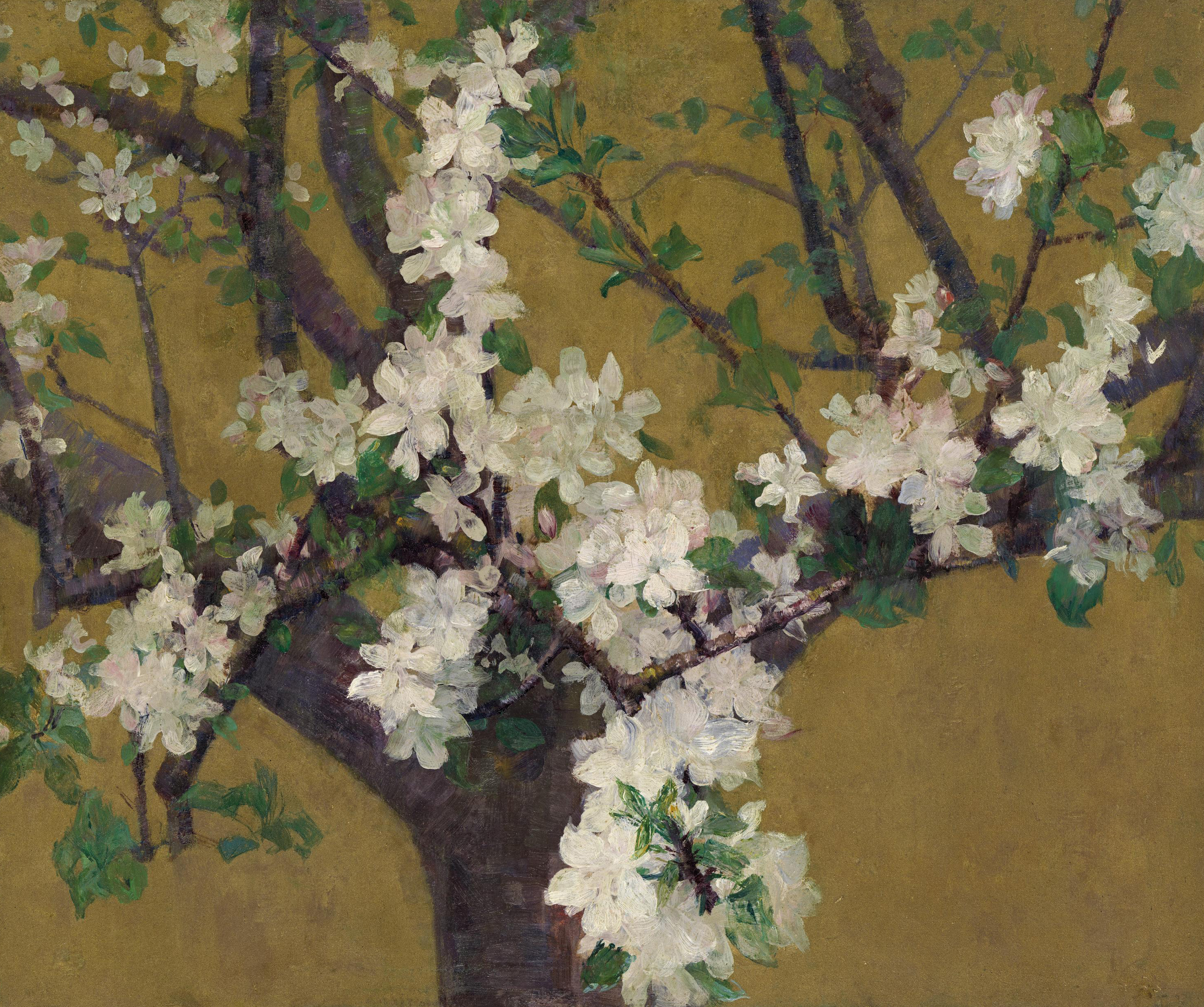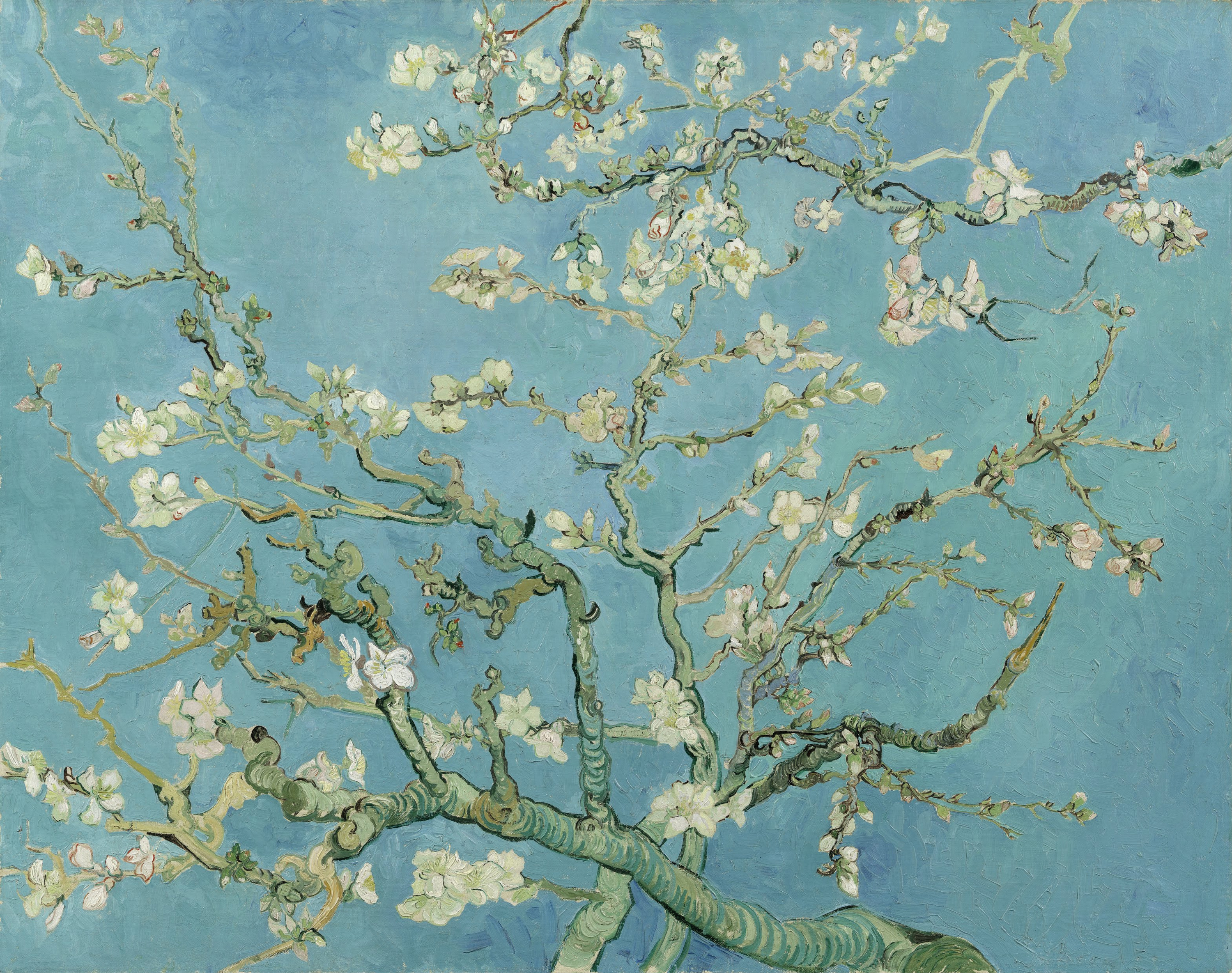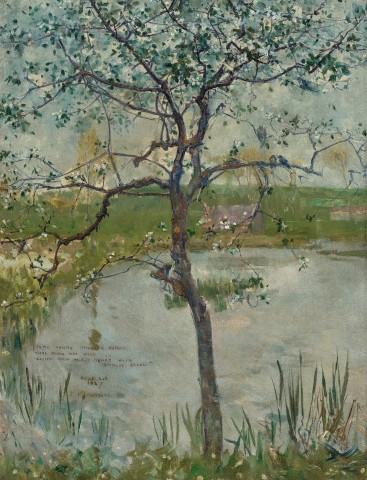A BLOSSOM TREE, BELLE-ÎLE, 1887
JOHN PETER RUSSELL
oil on canvas
61.5 x 46.5 cm
signed, dated and inscribed lower left: …’To my friend Monsieur Dufour Those friends thou hast, grapple them to thy heart with hooks of steel / Belle Ile 1887/J. P. Russell’
Monsieur Dufour, France, acquired from the artist in 1887
Private collection
Sotheby’s, Melbourne, 17 April 1989, lot 301
Private collection
Sotheby’s, Melbourne, 19 April 1993, lot 346
Jennifer Manton, Sydney
Estate of the above, Sydney
John Peter Russell

John Russell holds a unique place in Australian art history for his close association with avant-garde circles in 1880s Paris and his firsthand acquaintance with some of the masters of European Impressionism and Post-Impressionism. As a student at Fernand Cormon’s atelier in Paris in the mid-1880s, Russell worked alongside Émile Bernard, Henri de Toulouse-Lautrec and later, Vincent van Gogh, with whom he established an enduring friendship.1 On a summer break from Paris in 1886, Russell spent several months on Belle-Île, one of a group of small islands off the coast of Brittany. It was here that he met and befriended Claude Monet who he saw working en plein air, famously introducing himself by asking if he was indeed ‘the Prince of the Impressionists.’ Uncharacteristically, Monet allowed Russell to watch him work and on occasion, to paint alongside him, experiences that provided the young Australian artist with an extraordinary insight into the techniques and working method of one of the founders of the Impressionist movement. The influence on Russell was significant and the paintings he made in Italy and Sicily only a few months later show him working in a new style, using a high-keyed palette (from which black had been banished entirely) and his compositions made up of strokes of pure colour.2 In addition to showing him how to use colour as a means of expressing a personal response to the subject, Monet’s example also highlighted for Russell the importance of working directly from nature.3
Inherited wealth afforded Russell freedoms that others did not have and inspired by the possibilities of Belle-Île for his art and his life, he bought land overlooking the inlet of Goulphar. Writing to Tom Roberts in October 1887, he said, ‘‘Well my dear TR I’m about finished with studios & will jump out of Paris as soon as possible. The tone of things don’t suit me… I am about to build a house in France. Settle down for some five years. Get some work done. It will be in some out of the way corner as much as a desert as possible.’4 Russell lived on the island until 1909 and the subjects it offered – especially the sea and rugged coastline – encouraged what Russell scholar, Ann Galbally, described as an ‘intensity of vision’ in which experimental brushstrokes and his committed pursuit of pure colour captured the distinctive changing light and atmospheric conditions of the environment.5
Vincent van Gogh

Russell had a deep interest in Japanese art and this is reflected in A Blossom Tree, Belle Île, 1887 and a number of other related paintings of spring blossoms made around this time, including The Garden, Longpré-les-Corps-Saints, 1886 (private collection) and Almond Tree in Blossom, 1887 (National Gallery of Victoria). Russell had seen Japanese ceramics and bronzes in the 1879 – 80 Sydney International Exhibition, but a broader interest was stimulated by van Gogh who collected Japanese ukiyo-e woodblock prints (as did his brother, Theo, and Monet) – developing a collection which numbered in the hundreds – and encouraged him to do the same.6 Russell absorbed the lessons of Japanese ukiyo-e design, introducing flattened pictorial space, distortions of traditional perspective and dramatic cropping of subjects to his compositions. Almond Tree in Blossom, 1887 (National Gallery of Victoria) employs bold cropping and a close-up view of the blossom-covered branches, which are flattened in space against a solid but shimmering background of powdered bronze paint, itself a reference to the gilded backgrounds of Japanese screens.7 In this painting, the dramatic reflection of the tree trunk connects the reedy foreground, the central band of water, and the distant grassy bank – with a small cottage pictured just right of the tree – within a tightly compressed space. Prominently positioned at the front of the picture plane and filling the entire top section of the canvas, the blossoming tree and its beauty is Russell’s focus. The delicacy and transience of this seasonal flowering provides a poignant contrast to the dedication Russell inscribed to his friend Monsieur Dufour, which reads, ‘Those friends thou hast, grapple them to thy heart with hooks of steel.’
This painting has a notable provenance, having been one of several works by Russell in the Jack Manton Collection of Australian Impressionist Art. Begun in 1961, the collection aimed to ‘include the best possible example of the chosen artist’s work, capture developmental changes (if any) and show any shift of emphasis in style, period or location’.8 Many paintings from the Manton Collection were subsequently acquired for the permanent collection of the National Gallery of Victoria.
1. Although Russell did not see van Gogh again after he departed for Arles in the south of France in early 1888, their friendship continued via extensive correspondence. See Galbally, A., A Remarkable Friendship: Vincent van Gogh and John Peter Russell, The Miegunyah Press, Carlton, 2008.
2. Taylor, E., ‘John Russell and friends: Roberts, Monet, van Gogh, Matisse, Rodin’, Australian Impressionists in France, National Gallery of Victoria, Melbourne, 2013, p. 60
3. Prunster, U., ‘Painting Belle-Île’, Prunster, U., et al., Belle-Île: Monet, Russell and Matisse, Art Gallery of New South Wales, Sydney, 2001, p. 31
4. Russell to Tom Roberts, 5 October 1887, cited in Tunnicliffe, W., (ed.), John Russell: Australia’s French Impressionist, Art Gallery of New South Wales, Sydney, 2018, p. 193
5. Galbally, op cit., p. 15
6. Tunnicliffe, op. cit., p.39
7. Taylor, op. cit., p. 57
8. Manton, J., ‘Genesis’ in Australian Painters of the Heidelberg School: The Jack Manton Collection, Oxford University Press, Melbourne, 1979, p. 148
KIRSTY GRANT
